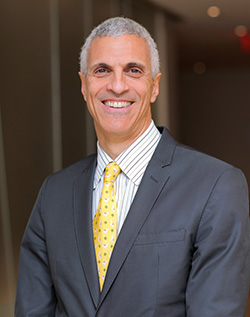
Dr. Mark Souweidane today treated the final patient in his Phase I clinical trial of convection-enhanced delivery (CED) for diffuse intrinsic pontine glioma (DIPG). The trial, which had enrolled 27 patients over the past four years, was designed to test the safety of CED as a means of delivering a cancer-fighting drug directly to the site of a DIPG tumor. (More about the DIPG trial.)
The trial received FDA approval in late 2011, and the first patient was treated in May 2012. (Read “Cheering for Caitlin,” a profile of the first patient.) Since then, 27 children have received infusions of a therapeutic agent called 124I-8H9, which consists of the 8H9 antibody (produced by mice and effective against many kinds of tumors) combined with the radioactive substance 124I. The dosage of the drug was increased over the course of the trial, also testing safety, but no dose-limiting side effects occurred in any patient. Several of the children were treated more than once; today's infusion was the 31st performed.
The infusions, which were done at Memorial Sloan Kettering Cancer Center, were able to deliver the drug directly to the brain stem tumor and were not blocked by the body’s protective blood-brain barrier, which normally prevents chemotherapy drugs from crossing from the bloodstream into the brain in sufficient concentrations to attack a tumor. In this trial, Dr. Souweidane was able to achieve concentrations of 1,000 times or more than what can be achieved with IV chemotherapy. He was also able to design and test new ways to measure those concentrations at the tumor site and monitor how long the drug stayed in the tumor.
Dr. Souweidane and his team will spend the next several months evaluating the data and preparing the results for publication. In the meantime, researchers in the Children’s Brain Tumor Project laboratory have been working to pave the road for the next stages of the trial. Other drugs and drug combinations are being tested to determine what the best agents are to infuse, and at what dose levels. DIPG cell lines are also being grown in the lab, providing a rich source of information about how the tumor mutates over time and responds to different treatments in vitro as well as in animal models. (More about the Children’s Brain Tumor Project.)
Read the blog post written by Dr. Souweidane after he treated the final patient in the trial